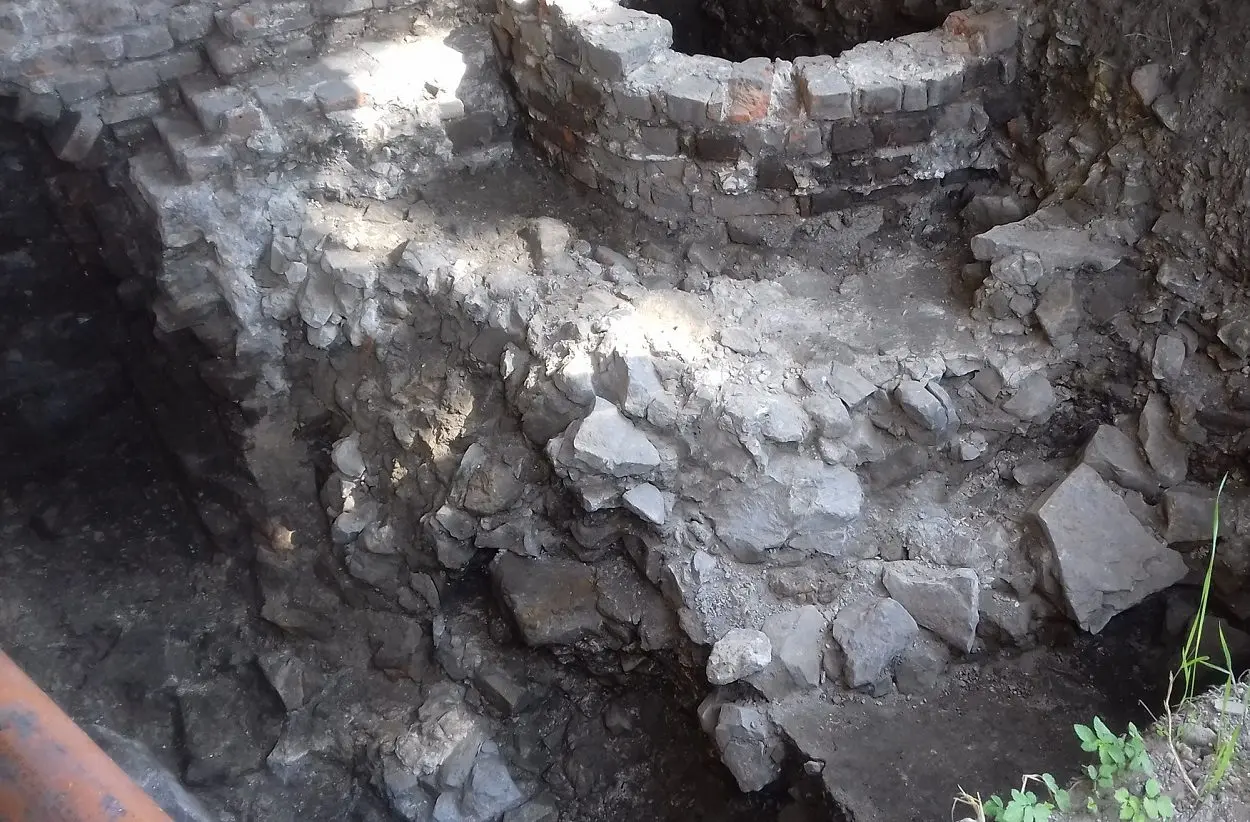Archaeologists conducting excavations in Lublin’s Old Town have found the remains of a medieval tower which is apparent in works by Braun and Hogenberg, known as the “Theatrum praecipuarum totius mundi urbiurti”.
Evidence of the tower was identified on a fragment of the town’s defensive wall at the tenement house at ul. Jezuicka, located in Lublin’s Old Town, Poland. The tower has four sides and appears in the panorama of Lublin by Braun and Hogenberg, which was published in Cologne in 1618.
The panorama shows the tower near the Dung gate, close to the presbytery of the Jesuit monastery church, which today is the Lublin archcathedral of St. John the Baptist and St. John the Evangelist, consecrated in 1604.
Dariusz Kopciowski, the Lublin voivodeship conservator of monuments, said: “This tower was most likely mentioned in the privilege of Stefan Batory granted to the Jesuits in 1585. This privilege allowed the construction of a Jesuit complex outside the city walls from the south, along with permission to use several defensive works existing in this section – including the Jesuit Gate, the semi-circular tower, and the quadrilateral tower in question.”

Construction of the town’s fortifications were commissioned by Casimir III the Great (King of Poland from 1333 to 1370), who built a large stone castle in 1341 and encircled the city with defensive walls. However, by the 16th to 17th century, the city walls were mainly obsolete and most were demolished by the 19th century as the city expanded.
“Parallel to the archaeological works, architectural and conservation research is being carried out, during which further remains of the tower and the Lublin fortification system will be located,” added Kopciowski.
Header Image – Braun and Hogenberg’s “Theatrum praecipuarum totius mundi urbiurti”

